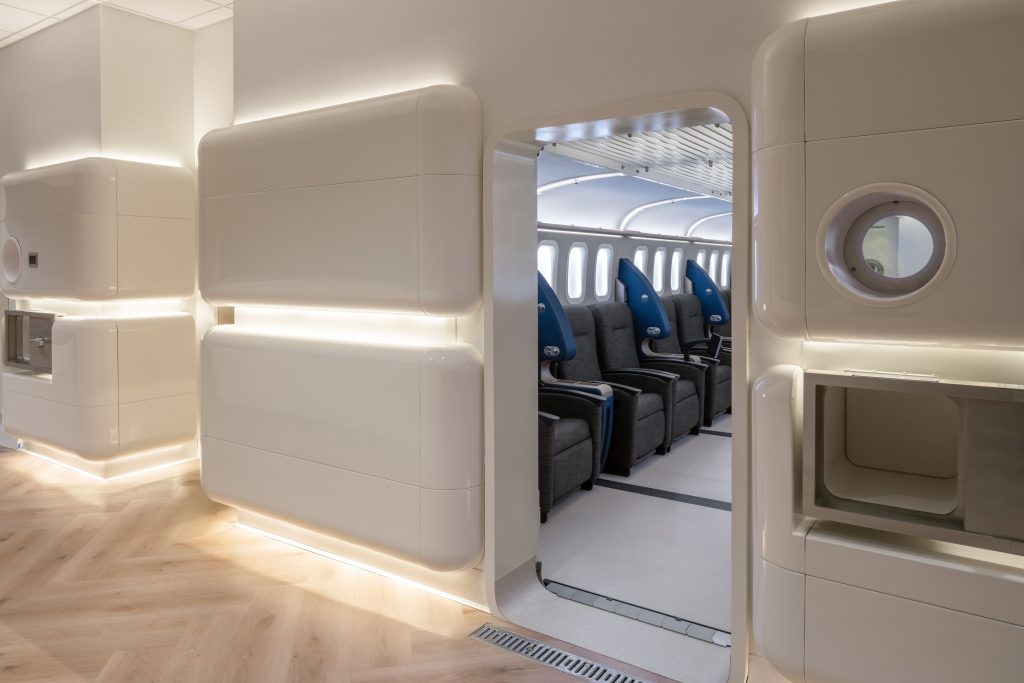Defying Limitations: Hyperbaric Oxygen Therapy’s Impact on Reversing the Aging Process
Getting older can feel overwhelming. Between experiencing lapses in memory, a decline in your physical capabilities, and ongoing health issues, you may wonder if there’s a better way to age gracefully. While many believe these age-related issues are “just a part of the norm,” it’s likely because they haven’t heard about Aviv’s hyperbaric oxygen therapy (HBOT).
Aviv Clinics’ HBOT is a premier, proven process for reverse aging. A medical treatment that involves using the hyperoxic-hypoxic paradox, HBOT increases oxygen levels in the body up to 10 times higher than normal. This encourages the body to unlock its self-healing abilities. With the right team by your side, HBOT can help your brain and body age gracefully.
Learn the science behind Aviv’s hyperbaric oxygen therapy and its impact on reversing the aging process. The time to move forward with confidence begins now.
Daniel van Otterdijk, former Aviv Clinics client:
“My memory wasn’t as sharp as it used to be…and I just accepted it as a part of the aging process. [After the Aviv Medical Program] there’s been massive change in my life.”
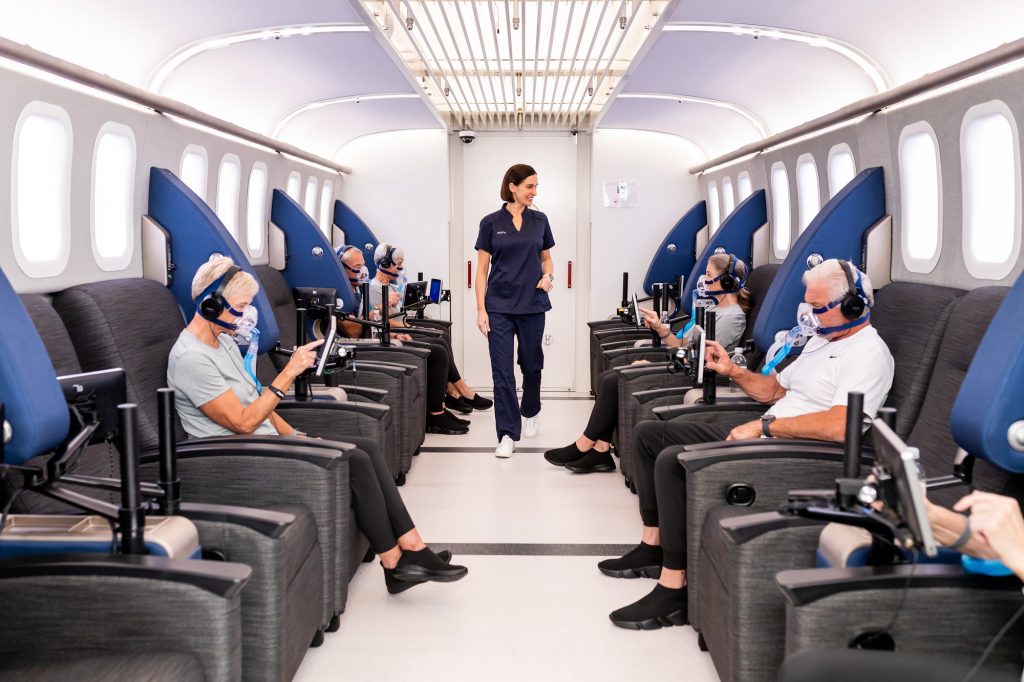
HBOT: A Proven Reverse Aging Method
Reverse aging is a clinically-proven outcome that enhances the quality of life for many, no matter their age or cognitive and physical condition.
How? The answer lies in five key hallmarks of aging:
- Telomeres: Think of telomeres as the hardened ends of shoelaces (aglets). Just as aglets protect the laces, telomeres protect our chromosomes from declining. Telomeres naturally shorten as we age.
- Senescent cells: These are aging cells that are alive but have stopped multiplying. When senescent cells collect over time, they can contribute to age-associated conditions.
- Stem cells: Stem cells repair damage in the body. Stem cells naturally decrease with age. This can make it difficult for our bodies to regenerate damaged tissue.
- Mitochondria: These are parts of cells that develop energy for the body. Mitochondria gradually grows less efficient over time.
- Oxygen: Arteries become narrower with age, which restricts blood flow and oxygen to essential organs.
A landmark study discovered that HBOT could reverse the main biological signs of aging in humans:
“We have found that using our protocol we are able to decrease the numbers of these senescent cells. We’ve also shown that we are able to increase the telomere lengths.” Dr Efrati.
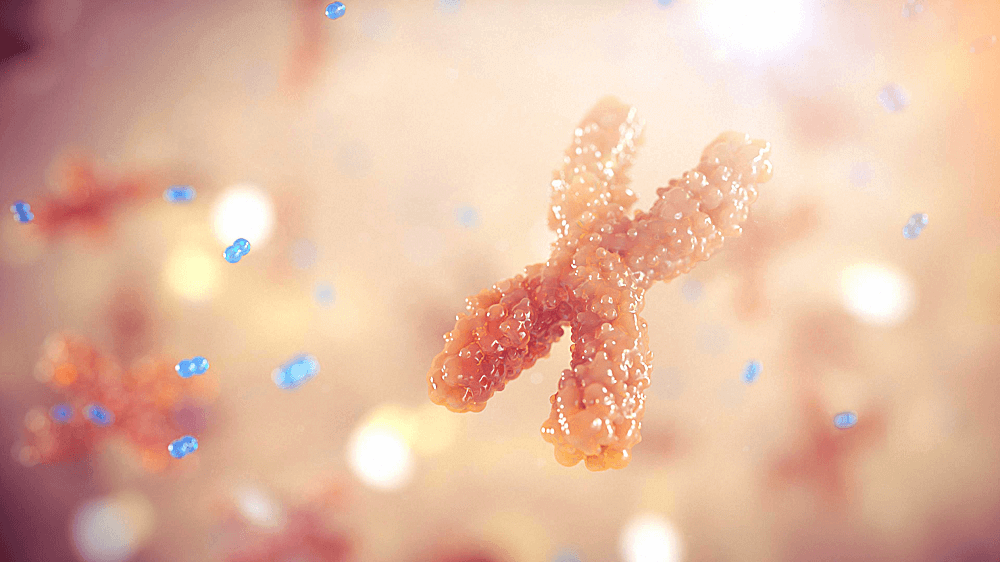
According to Dr. Amir Hadanny (co-author of the study and Aviv Clinics physician), the study has shown that:
“In just three months of HBOT, we were able to achieve such significant telomere elongation—at rates far beyond any of the currently available interventions or lifestyle modifications.”
Let’s dive deeper by walking through the specific ways HBOT can reverse the aging process — ways that have restored many people’s potential for living life to the fullest.
HBOT Can Slow Down Cognitive Decline
The brain is a powerful organ, and you can preserve cognitive health with proper oxygen and nutrients. Cognitive health tends to decline as we get older. This may be why activities, such as keeping track of tasks or analyzing data at work, become harder and more frustrating to do than before.
Luckily, the team at the Sagol Center for Hyperbaric Medicine and Research discovered:
- A specific HBOT protocol can slow cognitive decline, possibly due to its ability to increase blood flow to the brain. This process helps regenerate brain cells, blood vessels and stem cells proliferation.
- The HBOT protocol serves as a safe and effective intervention for cognitive decline:
“In our study, for the first time in humans, we have found an effective and safe medical intervention that can address this unwanted consequence of our age-related deterioration.” –Dr. Shai Efrati
HBOT Can Improve Memory Function
The brain is a delicate organ that often needs a gentle push to reach its full potential.
HBOT can help bridge this gap and improve memory function. Study participants who received HBOT showed higher levels of memory strength than those who didn’t receive the therapy.
HBOT Can Delay the Onset of Alzheimer’s Disease
Poor blood circulation means less blood can reach the brain. This impacts memory, thinking, and behavior and can cause vascular complications—a precursor to Alzheimer’s disease.
This sounds frightening, but the HBOT protocol available at Aviv Clinics Dubai shows promise in:
- Reversing the primary activators for Alzheimer’s disease and dementia
- Managing early symptoms of these conditions
“By treating vascular dysfunction, we’re mapping out the path toward Alzheimer’s prevention. More research is underway to further demonstrate how HBOT can improve cognitive function and become an influential tool in the imperative fight against the disease.” –Dr. Shai Efrati
HBOT Can Encourage Better Blood Circulation
The aging process tends to slow down blood circulation throughout the body—a function that keeps your mind and heart strong and delivers oxygen to organs that need it.
Fortunately, HBOT, delivered using a specific protocol, can improve blood circulation and encourage angiogenesis—the growth of new capillary blood vessels.
HBOT Can Help Manage Chronic Pain
Globally, it has been estimated that 1 in 5 adults suffer from pain. As many of us know personally, suffering from chronic pain often progresses with age.
With the right HBOT process, you don’t have to be the one experiencing painful conditions. HBOT and other therapies, exercise, and proper nutrition can be a systemic way to manage chronic pain.
One study reports that: “HBOT can improve the symptoms and life quality of FMS [fibromyalgia] patients.” It can also manage abnormal brain activity in pain-related areas—a relief for people who have given up hope of ever feeling like themselves again.
HBOT Can Improve Physical Performance
With more oxygen in the body, Aviv’s HBOT protocol can help you feel physically stronger, promoting:
- Better fitness, strength
- Improved coordination, and balance
- Less pain and inflammation
- Better sleep
- Improved sexual performance for men
Watch as Dr. Joseph Maroon shares data on how his health progressed and his triathlon time improved after participating in a personalized HBOT program:
Aviv Clinics Makes It Possible to Live Well for Longer
The details above are true testaments to HBOT’s impact on reversing the aging process. While society believes having a variety of health problems are simply a natural part of aging, science says otherwise. And at Aviv Clinics, we established a renowned program based on this data.
The Aviv Medical Program: A New Approach to Aging
The Aviv Medical Program was founded to help individuals from all walks of life reach their full physical and cognitive potential. Clients have noted feeling “very energetic” and a revival of self-esteem.
Depending on your symptoms, needs, and goals, your program can include:
- In-depth review of medical history
- Comprehensive physical and neurological exam
- Physical therapy evaluation
- Highly advanced brain imaging scans
- Neurocognitive tests
During the treatment, the program can include a combination of:
- Specific HBOT protocol from the mentioned studies
- Cognitive training
- Physical training
- Dietary coaching
Our Diverse and Experienced Team
There isn’t a one-size-fits-all solution to enhancing physical and cognitive performance. This is why it’s important to have a team of experienced and supportive medical professionals by your side throughout your aging years.
Aviv Clinics’ diverse team of neurologists, Physiotherapists, and physicians explores each client’s health and performance from different angles. This personalized attention enables us to build a custom treatment plan just for you.
Our Success Stories
Our incredible clients walked into the Aviv Medical Program with a wide range of age-related concerns but walked out with a renewed zest for life. Learn about their journey
They are evidence of the powerful impact Aviv Clinics’ powerful treatment plan can have on your or your loved one’s life. The current challenges that you face do not need to be part of your life moving forward.
Schedule a Consultation
Improving the quality of your life starts here. To begin the reverse aging process, contact our team to schedule a consultation.
Using Hyperbaric Oxygen Therapy to Address TBI and Concussion
Head injuries are much more common than one might think. According to the National Institutes of Health (NIH), an estimated 1.7 million Americans sustain a TBI each year. The Centers for Disease Control and Prevention (CDC) reports that there were over 64,000 TBI-related deaths in 2020, which equates to more than 175 brain injury-related deaths every day.
Those most affected include adolescents aged 15-19 and adults older than 65. Among seniors, falls are the most common cause of TBIs—a pervasive problem that can be mitigated with a few key strategies.
Yet, despite how pervasive TBIs are, many people don’t realize when they’re experiencing the “traumatic” incident. At one time, a mild traumatic brain injury (mTBI), which many know simply as a concussion, was actually thought to be a benign event. With much research, experts now know that even small, repeated injuries to the brain can have significant effects. These injuries can contribute to adverse neuropsychological outcomes—both acutely and long-term.
For example, in the moment, a concussion might cause dizziness, ringing in the ears, blurred vision, and vomiting. But over time, that same injury or repeated injuries may contribute to ongoing symptoms, such as chronic headaches, trouble concentrating or thinking clearly, memory problems, poor sleep, depression, anxiety, and irritability. Some people may not even connect an injury that happened years ago with their current symptoms, which can make it difficult to properly diagnose a TBI or post-concussion syndrome.
Unfortunately, the incidence of TBI and concussion persists. Per the Brain Injury Association of America, cumulative evidence shows that an estimated 5.3 million men, women, and children are living with a permanent TBI-related disability in the U.S. today.
Yet, does it have to be “permanent”?
HBOT’s Role in Relieving TBI Symptoms
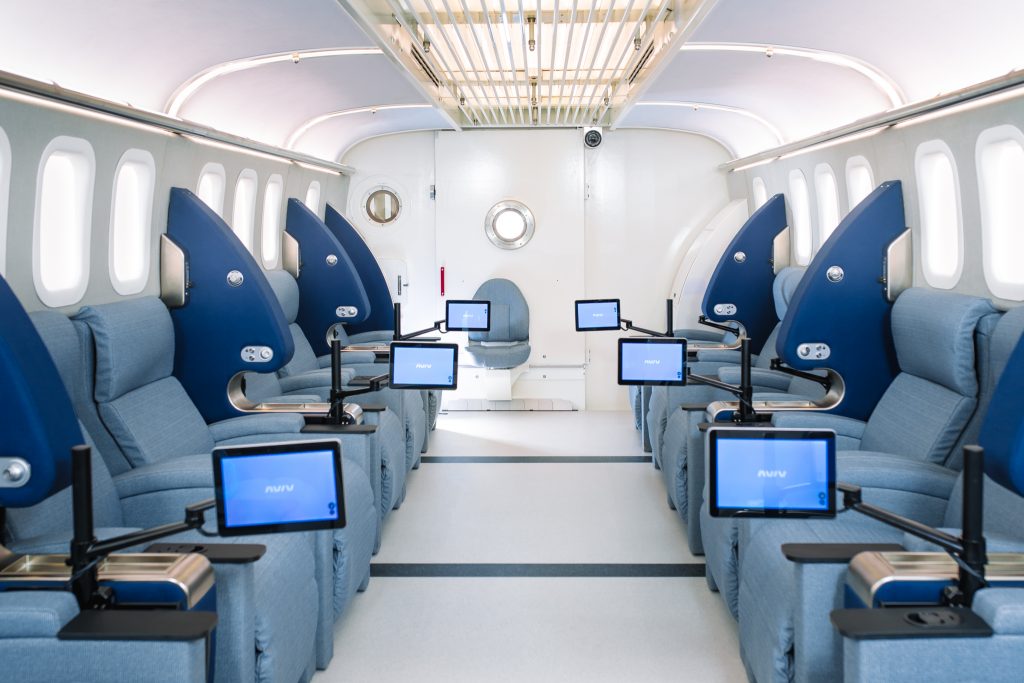
Dedicated research into brain healing reveals a therapy that produces positive results in cases of TBI and post-concussion syndrome. Hyperbaric oxygen therapy (HBOT) has historically been accepted as an effective treatment for medical issues like wound healing, severe infections, and decompression sickness. For some time, HBOT had not been explored much beyond those applications.
However, research in the last two decades reveals that HBOT, in combination with certain cognitive, nutritional, and physiological protocols, is able to repair areas of the brain that have been damaged due to TBI and concussion, as well as stroke, post-traumatic stress disorder, fibromyalgia, Lyme disease, and other neurological conditions.
What Results Can Individuals Expect?
To understand how HBOT works to address TBI and post-concussion damage, it’s important to know what changes occur in the brain during those injuries. Structural damage indicates a physical impact on the brain, such as bleeding. Metabolic damage is present when the brain’s cells are affected.
Traditional scans like CT and MRI may not be able to detect metabolic damage, especially if an injury occurred years ago. More advanced scans—like functional MRI and SPECT—are better able to identify areas of the brain that may be producing chronic post-concussion symptoms.
Applying HBOT and the unique protocols of the Aviv Medical Program yields multiple changes in the brain:
- New blood vessel formation (angiogenesis)
- New and stronger neural connections
- Stem cell production
These neural, vascular, and cellular changes contribute to cognitive improvements in memory, executive function, attention, processing speed, and spatial memory. Individuals with brain-based motor skill challenges also benefit from this comprehensive therapy.
Elements of the Aviv Medical Program also include cognitive therapy, strength and physical training, and nutritional coaching. The physiological and nutritional aspects of Aviv Clinics’ customized protocol elicit enhancements such as greater aerobic fitness, higher energy levels, improved sleep, and reduced pain. Overall, individuals report a significant improvement in their quality of life after completing the program
Bottom Line

If you’ve ever been in a car accident, fallen off a horse, or had “your bell rung” playing sports, you may have experienced a brain injury that could still be impacting your health. The Aviv Medical Program can help ease your symptoms.
If you or a loved one suspects a TBI or concussion has left lingering symptoms, contact us to learn more about how investing 90 days into treatment could change the rest of your life.
What is a Hyperbaric Oxygen Chamber and How Does It Work?
Hyperbaric oxygen therapy (HBOT) exists as an effective treatment for specific health conditions, including decompression sickness, serious infections, non-healing wounds, and severe burns. Advancements in HBOT science have also emerged, expanding the potential of HBOT’s impact. Yet, not all HBOT chambers are the same. The mechanisms by which each chamber works serve different purposes. It’s important to understand how these chambers operate and what benefits can be achieved in order to reach your health goals.
Monoplace vs. Multiplace HBOT Chambers
Aviv Clinics uses the world’s most advanced multiplace hyperbaric oxygen therapy chambers.
Two main types of HBOT chambers exist: multiplace and monoplace. Monoplace HBOT chambers also take two forms—hard-sided and soft-sided. Both forms are designed to only accommodate one person at a time.
Soft-sided monoplace chambers, often referred to as bag HBOT chambers, are primarily used “on the go.” These HBOT chambers pressurize to a minimum amount of pressure and deliver only a slightly higher dose of oxygen than what you’re breathing in the natural environment.
Soft-sided HBOT chambers are mostly used for anti-inflammation and workout or game recovery. You’ll often see them in sports medicine clinics. Bag chambers are also used in mountain climbing. If a climber starts to suffer from altitude sickness, being in the bag chamber allows them to return to sea level faster and start recovery as they are airlifted to safety.
The other type of monoplace HBOT chamber is constructed of more rigid materials, such as plexiglass. You’ll typically find these chambers in wound care clinics. They are pressurized to an atmospheric level that is predetermined (and prescribed) by a patient’s physician. Patients breathe 100% oxygen during the entire therapeutic session, a length of time that is factored into the prescription.
Because patients are separated from clinicians during the HBOT treatment in this type of monoplace chamber, it can become problematic if the patient experiences any sort of health event mid-therapy. A depressurization process must take place before the patient can exit the chamber—which takes time. Plus, if a patient happens to be undergoing a seizure, that depressurization cannot commence until the person stops seizing.
While seizure occurrence is rare during a medical HBOT treatment, it can happen—and is more likely in patients who have pre-existing seizure disorders or a history of low blood sugar. A related complication is there’s no way for clinicians to medically assess what’s happening at that very moment and implement medical treatment.
A third disadvantage is that monoplace HBOT chambers hold a heightened risk for fire. It’s crucial that no electronics are allowed in the monoplace chambers to prevent this risk.
Multiplace HBOT chambers treat multiple individuals at the same time. These chambers are commonly used in the diving industry—for example, in commercial diving for underwater construction and maintenance. However, advancements in HBOT science have led to other medical uses around the world.

At Aviv you will find multiplace HBOT chambers that are more like suites; a little like flying business class, they are spacious, comfortable, and private. Created in partnership with Fink Engineering, the world’s premier provider of hyperbaric suites, our HBOT chambers are the most technologically advanced, and most importantly, your safety is guaranteed.
In multiplace chambers, individuals are also breathing 100% oxygen in a highly pressurized environment. But, each person has their own breathing apparatus. One distinct advantage of multiple chambers is the ability to have a medical professional in the chamber while individuals are undergoing their HBOT treatment—unlike the monoplace chamber’s limitations.
Ultimately, safety is of utmost importance in HBOT treatment. Most medical HBOT facilities that are run through a hospital or clinic are operating with the proper certifications, whether using monoplace or multiplace chambers. At Aviv Clinics, all physicians, nurses, and hyperbaric technologists undergo in-depth training and have reached certification status. However, it’s important to keep in mind not all facilities meet these stringent safety standards.
Advancements in HBOT Science
Modern hyperbaric oxygen therapy protocols go beyond addressing a specific condition. The science, technology, and unique protocols of the Aviv Medical Program—and the design of the clinic’s multiplace HBOT chambers—work proactively to maximize overall health. In other words, the Aviv Clinics HBOT chambers offer more than just oxygen therapy.
The foundational aspects of HBOT treatment are still in play: The multiplace chamber is pressurized to the optimal level, which takes about 10 minutes. Once the target pressure is reached, individuals begin breathing 100% oxygen for a period of 20 minutes. After 20 minutes, masks are removed for five minutes. Total treatment time of two hours.
This on/off alternating protocol of oxygen fluctuation tricks the body into thinking it is in low-oxygen distress. The body’s natural reaction to the rapid decline in oxygen levels is the creation of new stem cells. It also triggers something called hypoxia-inducible factor (HIF), which plays a role in angiogenesis, or the creation of new blood vessels.
Both are instrumental in healing and rejuvenating various parts of the body and brain, in cases such as:
HBOT and the Aviv Medical Program protocols also contribute to enhanced physical performance, cognitive performance, and overall vitality and quality of life.
The Bottom Line
If you’re considering HBOT to progress your health, it’s imperative to know the advantages and potential limitations of the different types of HBOT chambers—and which chamber will best help you reach your goals.
Contact us if you have any questions about HBOT treatments or would like to explore how the Aviv Medical Program can benefit you or a loved one.
Hyperbaric Oxygen Therapy (HBOT): Benefits for Athletes
Athletes are always looking for their next “win,” whether they are at the professional level or a weekend warrior. But, in doing so, they also encounter several challenges. Fatigue and injuries can seriously damage one’s competitive edge. In some cases, an injury or recurring injury forces athletes to abandon their sport entirely.
In recent years, hyperbaric oxygen therapy (HBOT) has been proven to be an effective way to address injuries, aid in recovery, and improve athletic output—both mentally and physically. Even if you’re an amateur athlete who is just passionate about your sport of choice, HBOT is a viable way to take your performance to the next level.
Learn all about the hyperbaric oxygen therapy benefits for athletes and how you can get started.
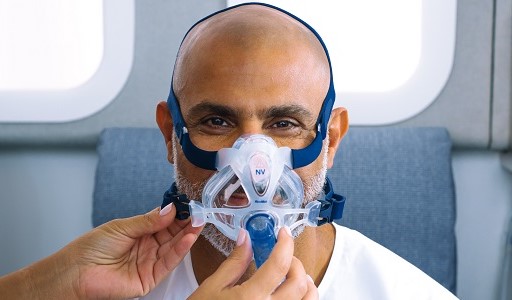
4 Ways Hyperbaric Oxygen Therapy Optimizes Athletic Performance
There are four main HBOT benefits for athletes.
1. Increased Energy and Physical Performance
HBOT encourages the body to heighten its aerobic stamina, benefits include:
- Higher strength and endurance
- Increase mitochondria efficiency
- Enhance maximal oxygen consumption (VO2 max)
2. Accelerated Recovery
Studies speak volumes about HBOT’s transformative impact on physical athletic performance:
- Reducing inflammation
- Improving tissue metabolism
- Increasing oxygen supply to injured tissues
- Enhancing stem cell proliferation and migration to injured tissues
- Safely reducing downtime and allowing a faster return to the competitive arena
Watch: Tommy Fleetwood, six-time DP World Tour winner and Ryder Cup player – enhanced athletic performance at Aviv Clinics:
3. Improved Mental Clarity
Cognitive performance, which is a foundational focus of the Aviv Medical Program, plays a crucial role in athleticism. Intensity, focus, and attention support the physical fundamentals of any sport. Research illustrates patients who have undergone HBOT experience improvement in areas such as attention, focus, and information processing speed—all of which contribute to better athletic performance.
Alon Day, a three-time European NASCAR champion, also benefited from the program. Unlike other sports, race car driving is about intense, small motor movements. Race car drivers require significant grip strength to control the steering wheel at high speeds.
Racing requires intense cognitive focus for an extended period. This is one area where Day made significant strides. Small movements of the hand and foot can make the difference between finishing first or crashing. After completing the Aviv Medical Program, Alon achieved measured improvement in cognitive function.
“There is nothing like it in the world. You cannot go to the gym and get the same results. When I came over there every morning, I felt like I was a bionic man, being in the hyperbaric chamber at the cutting edge of medicine. At the end of the hyperbaric treatment, when the season started, I was at my best. I won the championship, and I broke every record. In my opinion, this treatment is for whoever needs to be on top of their game.”
4. Better Sleep
Sleep is imperative to restoring the body after a hard workout. But sometimes, depending on injuries, daily stressors, and the pressure athletes face, getting consistent quality sleep is easier said than done. The good news is that research indicates the cognitive and physical improvements that come with HBOT help improve sleep quality.
Dylan Hartley’s Hyperbaric Oxygen Therapy experience
Dylan Hartley, former England Rugby captain who suffered from post-concussion syndrome (PCS) due to repeated traumatic brain injuries has seen considerable improvement in his overall health after receiving treatment for head injury at Aviv Clinics Dubai in JLT. Read more about Dylan’s story
PCS can have significant consequences for both football and rugby players. PCS refers to a condition where individuals continue to experience symptoms following a concussion or traumatic brain injury, even years after the initial injury. PCS can have long-term effects on athletes’ physical, cognitive, and emotional well-being that may persist or even worsen for the rest of their life.
The only therapy proven effective is based on hyperbaric oxygen therapy (HBOT) protocol with fluctuations in oxygen and pressure to repair the concussed brain by inducing neuronal stem cells proliferation, generation of new blood vessels and improving brain metabolism. The needed HBOT protocol must be administered by a professional medical team with medical grade equipment that can deliver the exact treatment protocol proved to be effective.
Hyperbaric Oxygen Therapy can help athletes of all ages
Watch Dr. Maroon explain why he not only recommends the hyperbaric oxygen protocols of the Aviv Medical program to patients with concussive injury to the brain, but also how his own participation in the program has improved his athletic performance and recovery times.
When 14-year-old Linden Perry suffered from post-concussion syndrome due to a sports injury, she regained her health and performance through a holistic treatment program—one that entailed HBOT, cognitive, and physical training. The personalized treatment plan left Perry more energized and gave her the confidence to continue to excel in her athletic programs.
Which Hyperbaric Chambers for Athletes Are Most Beneficial?
While all hyperbaric chambers have the same goal—to deliver 100% oxygen in a high-pressure environment—not all chambers are created equally. There are different types of chambers that each possess a unique process.
- Monoplace chambers administer oxygen to one person at a time. The chamber’s structure reflects a tube or cylinder in which individuals lie in a horizontal position.
- Soft-side monoplace chambers are more “portable” than the rigid cylindrical HBOT chambers made of glass or plastic. But, it also cannot reach the level of pressurization to produce high-level results.
But neither of these chambers allows for the one key ingredient needed to achieve groundbreaking results: oxygen fluctuation.
Multiplace Chambers/Suites
Multiplace chambers or “suites,” such as the one at the Aviv Clinics facility in Dubai, utilize the science behind oxygen fluctuations in a pressurized environment. This mechanism produces the underlying elements of enhanced athletic performance, including:
- New stem cells. Stem cells can exist as any cell type in the human body. As it relates to physical performance, stem cell production supports the heart, lungs, and muscles. Lungs breathe deeper and more efficiently, allowing athletes to perform at a higher level for longer periods without becoming winded. The heart is able to pump out more oxygenated blood to other organs and muscles, and muscle growth occurs at a faster pace.
- Hypoxia-inducible factor (HIF). HIF plays a role in angiogenesis, or the creation of new blood vessels. With more routes for blood to travel throughout the body—to the heart, lungs, and muscle tissue—more oxygen is also getting to those areas. This prevents fatigue and muscle soreness. HIF is also instrumental in creating new red blood cells, ensuring that maximum oxygen flow goes to the organs.
- Vascular endothelial growth factor (VEGF). VEGF is a protein that gets released during HBOT treatments and “signals” blood vessel formation. Again, the more blood that can flow to key areas of the body, the higher one’s athletic capacity.
How Can Athletes Gain the Greatest Competitive Advantage?
With Fleetwood and Day—and any athlete looking to reap the benefits of a hyperbaric chamber—it’s not just about the oxygen, or even the oxygen fluctuations. Athletes need to incorporate additional components to reach their full potential.
Fleetwood and Day both experienced brain-based enhancements thanks to the cognitive training included in the Aviv Medical Program. Nutrition is another area athletes need to be cognizant of, especially when pushing their bodies to maximum output.
A comprehensive program also considers athletes’ unique goals—whether they’re coming off their sports season and are looking to facilitate recovery or want to start a new season in peak physical condition.
The Bottom Line
Whether you are a professional athlete or simply want to advance your athletic capabilities to their best potential, HBOT can help. To truly transform your game, the comprehensive approach of the Aviv Medical Program is second to none in achieving peak performance.
Athletes who go through the Aviv Medical Program may undergo HBOT along with physical, cognitive, and nutritional training. This holistic program is key to helping our patients enhance their health for the long run.
Contact us to learn more about how the Aviv Medical Program can help you achieve your goals.
Hyperbaric Oxygen Therapy (HBOT) Options for Stroke Recovery
Stroke Recovery
Stroke prevalence has spurred scientists to develop more effective stroke recovery therapies, including hyperbaric oxygen therapy (HBOT).
Recovery from an ischemic or TIA (“mini stroke”) may not be guaranteed, but this much is clear: people who receive timely and effective treatment recover with fewer post-stroke effects.
Unfortunately, timely treatment is not always attainable:
- Stroke is a “leading cause of death in the United States and is a major cause of serious disability for adults.”
- “More than half of stroke survivors age 65 and older” experience reduced mobility, relegating some individuals to a wheelchair for the remainder of their lives. Many struggle with cognitive function, speech difficulties, and visual impairments as well.
Thankfully, advanced rehabilitation programs exist, including hyperbaric oxygen therapy (HBOT) options and other therapies. The experts at Aviv Clinics discuss these key details below.
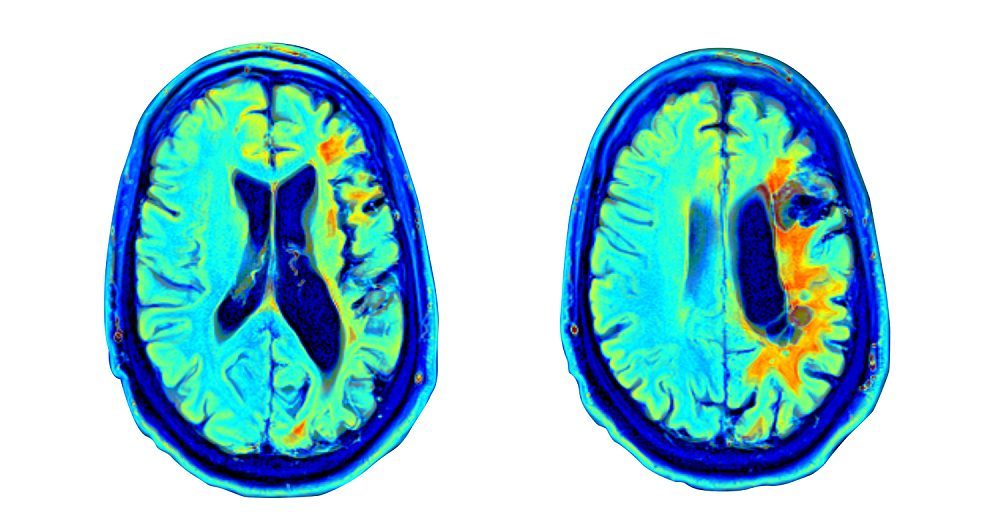
What Happens to the Brain during a Stroke?
When a stroke strikes, it immediately starts killing brain cells due to loss of blood flow. As many as two million brain cells die each minute the stroke goes untreated. Other cells become injured but don’t necessarily die off. Neurologists often describe them as being “stunned”.
Still, a significant part of the brain’s real estate comes under attack. The combined damage from injured and necrotic (dead) brain cells results in both immediate and long-term symptoms such as:
- Limb weakness or paralysis
- Slurred speech
- Vision complications
- Balance issues.
Nothing can be done about the dead brain cells, which is why timely intervention is so critical. However, a growing body of research indicates that HBOT can help repair the injured cells, even years after the initial stroke
What Is Hyperbaric Oxygen Therapy (HBOT)?
Hyperbaric oxygen therapy (HBOT) is a type of therapy that uses pressurized chambers to allow individuals to breathe in 100% pure oxygen.
In the hyperbaric suites at Aviv Clinics, the air is pressurized in the HBOT chamber to above atmospheric levels. This environment increases oxygen levels in the body to about 17 times higher than normal, allowing oxygen to be delivered even to damaged cells, such as those injured by stroke.
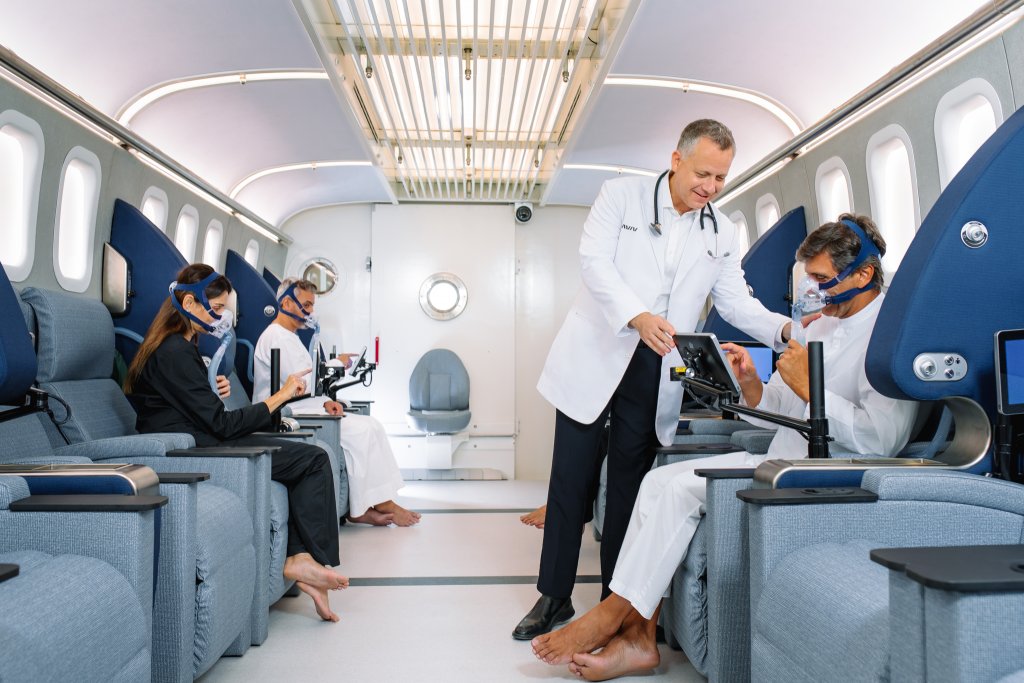
How Does HBOT Help with the Post-Stroke Recovery Process?
The unique HBOT protocol at Aviv Clinics uses a scientifically validated process in which oxygen levels are fluctuated throughout the HBOT session. When the mask is on, oxygen levels are very high. But, when the mask is off, the body is deceived into sensing a state of “low” oxygen because of the rapid decline.
This fluctuation triggers the body into repair and regeneration mode, which in turn:
- Stimulates stem cell proliferation
- Improves injured cell health
- Builds new blood vessels, optimizing blood flow
- Grows new connections in the brain
In the past, growing those new connections was inconceivable. Scientists previously believed that once neurons were destroyed, they could never rebound. Research has since disproved that notion.
What Benefits Can Stroke Survivors Achieve with HBOT?
Several studies have proven the benefits of using HBOT in post-stroke recovery. Repair mechanisms in the brain, prompted by HBOT, result in:
- Regained speech and reading capabilities
- Restored motor function, even with paresis
- Return to independence in performing daily activities
The Aviv Medical Program
When combined with the exercise, personalized nutrition, and extensive assessments that are part of the Aviv Medical Program, the outcomes become even more impressive:
- Some Aviv clients progress from using wheelchairs to walking on their own or with an assistive device.
- Clients who lost their ability to speak make immense recovery strides.
- Many report that the biggest benefit is simply not being a “burden” on their loved ones.
Our post-stroke program remains focused on research and incorporates a holistic and personalized approach that can include the following:
- In-depth review of health history
- Comprehensive physical exam
- Highly advanced brain imaging scans
- Neurological and neurocognitive tests
- Body composition analysis
- A detailed report of our assessment findings
- Cognitive training
- Physical training
- Dietary coaching
- Hyperbaric oxygen therapy (HBOT)
- A post-treatment report of your improvements and recommendations for future progress
Learn more about the program>>
Even if a person has no visible effects after having a stroke, the brain has still been damaged—and they are at a higher risk for a subsequent stroke. HBOT, through the Aviv Medical Program, can help mitigate that risk by improving the flow of blood to brain tissue and potentially prevent future strokes from occurring.
How Soon after a Stroke Can Hyperbaric Oxygen Therapy Be Administered?
Aviv Clinics recommends a 3-6 month wait after a stroke before beginning the Aviv Medical Program protocols. This allows for the brain’s natural healing progression to take hold.
The sooner stroke survivors act after the post-acute stage, the better. The research our scientists have done indicates a strong cohort from the one-month point to four years post-stroke.
That said, there’s really no limit on how long after a stroke individuals can participate in the program. We’ve seen success in clients who were as many as 10 years into their stroke recovery.
How Long Does It Take to See Results?
Most people see improvement from the Aviv Medical Program within the 8-12 weeks of therapy and medically verifiable results by the end of their treatment.
But keep in mind, no one-size-fits-all approach exists. You’ll receive your own unique therapy plan, so outcomes and timelines vary. Our ability to quantify your health plan is ultimately what delivers results.
For reference, here is a general overview of what our program looks like:
- Step 1: Assessment—A comprehensive set of neurocognitive, physical, and genomic assessments.
- Step 2: Treatment—Based on the assessment, we develop a customized routine that can include hyperbaric oxygen sessions with other types of personalized training/therapies. These may take place over 12 weeks.
- Step 3: Analysis—Our team uses advanced analytics to assess your program’s efficacy, and make the necessary adjustments.
- Step 4: Follow up—The Aviv Clinics team will offer ongoing monitoring and engagement post-treatment to help maintain your results.
Keren Trabelsi Finds Hope after Her Stroke
“[Treatment at Aviv is] like driving a Ferrari on the road to recovery versus driving like an old beaten-up car….”
Former Aviv Clinics client Keren underwent an ischemic stroke. This caused cognitive issues and paralysis on the left side of her body. Daily tasks grew more difficult, which left her feeling defeated.
Fortunately, Keren found the Aviv Medical Program. Aviv Clinics provided a personalized treatment plan encompassing many of the therapies we outlined earlier.
Thirteen months later, Keren can walk comfortably, type with her left hand again, and engage in a myriad of activities (crossword puzzles, Sudoku, etc.) she couldn’t participate in after her stroke.
The Bottom Line
Stroke survivors no longer need to feel like life is over due to debilitating cognitive and physical impairments. The Aviv Medical Program is rooted in extensive scientific research and has been instrumental in helping stroke survivors thrive well into their golden years.
Contact us to learn more about the Aviv Medical Program and how it can benefit you or a loved one.
